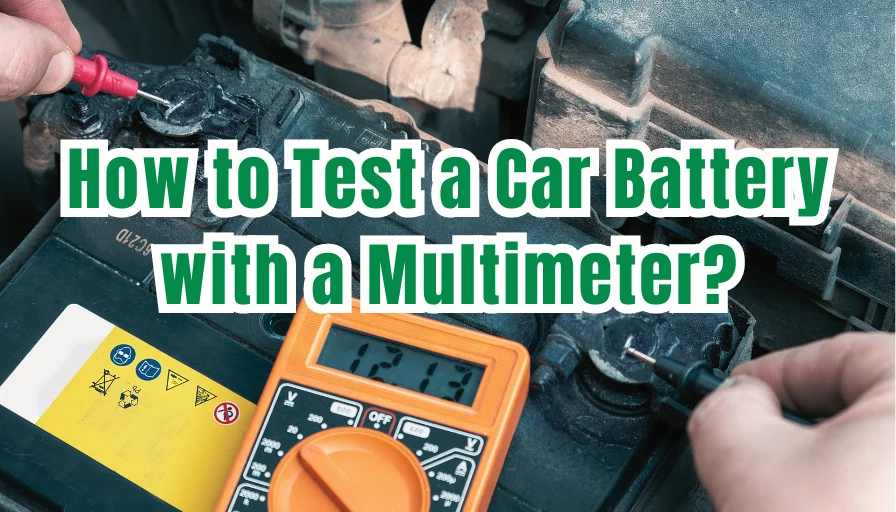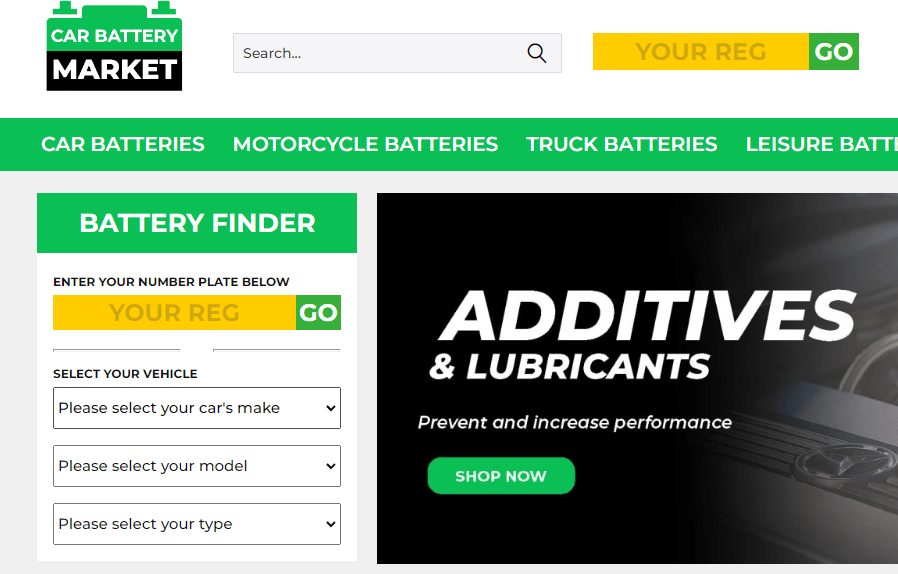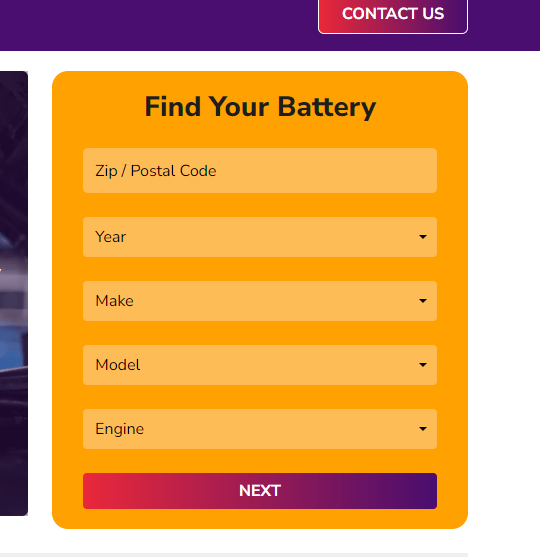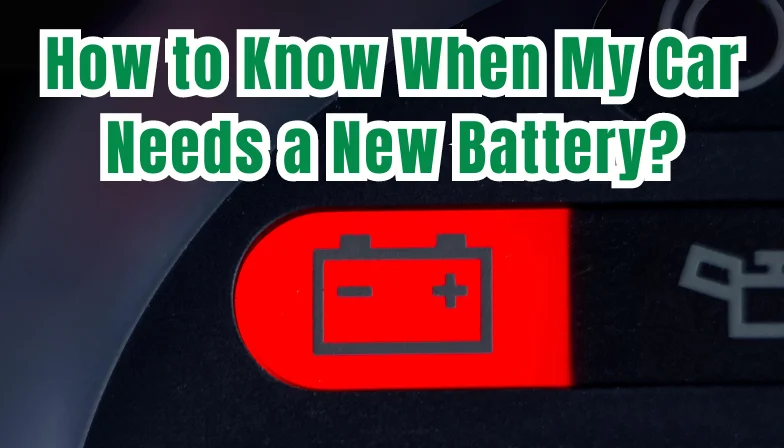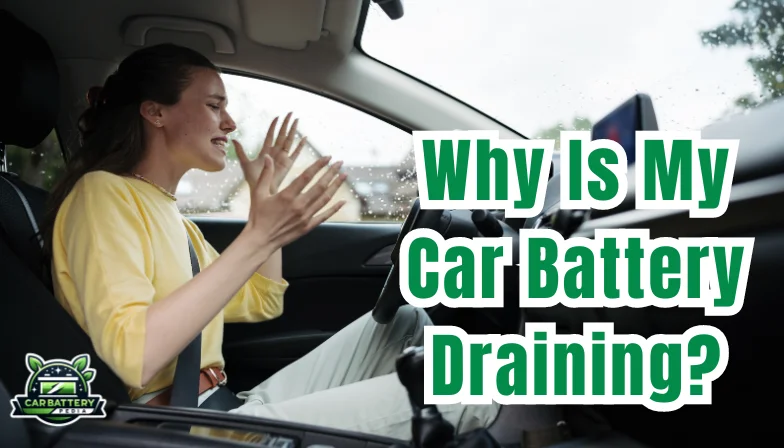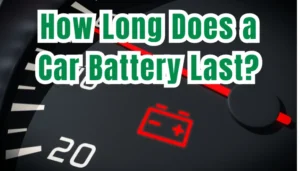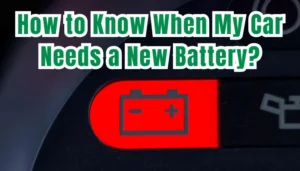Table of Contents
Introduction
Your car battery is like the heart of your car; It powers everything from starting the engine to turning on the headlights to keeping the radio running.
But we only realize how important it is when it stops working.
In this article, I will explain the structure of the vehicle battery, its types and how it works. This guide will help you to understand a car battery, the available types, and how it works. I will help you learn more about your vehicle’s battery and better understand what’s going on by explaining it as simply and clearly as possible.
I’ll also do my best to keep it from being just a monotonous series of block paragraphs.
Chapter 1- The Anatomy of a Car Battery
The car battery is a significant part of your car’s electrical system. It does more than start your car’s engine. If you want to understand how your car battery works and why it’s so crucial for your car’s performance, it’s better to know a bit about how it’s made. In this chapter, I’ll explain the basics of a car battery and how it helps your car run smoothly.
How a Car Battery Works
Imagine a car battery as a mini power station right inside your car. It’s not just any power station, but one that runs on a special kind of chemistry magic. This magic box is crucial because it helps kickstart your car and makes sure all the cool electronic stuff inside your car works, like your lights, radio, and charging ports.
Most cars use what’s called a lead-acid battery. This type of battery has six sections of plate blocks called cells connected in series. Each one can create about 2.1 volts of power. When they all work together, they manage to produce around 12.7 volts when the battery is fully charged and ready to go.
I found the image below on Varta Automotive‘s website, one of the biggest car battery manufacturers for you to see the details of the inside of a car battery.

Each section of the battery has two different kinds of metal plates sitting in a liquid, which is a bit like the battery’s special sauce called electrolyte. The electrolyte sauce is made of 65% de-ionised water and %35 sulfuric acid, which sounds scary, but it’s safely contained inside the battery. The metal plates are made from lead and lead dioxide. These materials are critical players in the battery’s chemistry show, making electricity happen.
Here is a bad car battery interior. This is how it looks in the real.

I am covering how a car battery produces electricity in Chapter 3, as well.

Tools called hydrometers are used to control the percentage of this sulfuric acid solution in batteries. As general consumers, we haven’t checked the rate of the liquid for years. But I’d like to mention it only for informational purposes.
When you turn your car key or push the start button, you’re basically waking up the battery. The acid in the battery gets busy and reacts with the metal plates. This reaction creates lead sulfate and frees up some tiny particles called electrons. These electrons rush through the battery’s wires to get your car’s engine rolling.
And here’s where it gets even more fantastic: once your car is running, it doesn’t forget about the battery. The alternator, another part of your car, starts recharging the battery, making sure it’s ready for your next drive. It’s like a give-and-take relationship where the car and the battery work together to keep you moving.
If you want to learn more academic details about how car batteries work you can visit Varta Automotive’s dedicated post. Also, in chapter 3, I explained the details of the subject in a simpler way that everyone could understand.
How Your Car Battery Gets You Going and Keeps Things Running
Ever wonder how your car starts and keeps all your gadgets running? It all comes down to a pretty awesome piece of your car called the battery. Let’s dive into how this essential part gets your car moving and powers up all the things you love to use while driving.
First off, the star role of the car battery is to get your engine started. It does this by powering up a part called the starter motor, which is like the initial push to get your engine going. The video below helps you to understand how a starter motor makes the engine start.
Think of it like the battery giving your engine a wake-up call. Once the engine starts, it doesn’t need the battery’s help to keep running. That’s where the alternator kicks in. The alternator is kind of like a mini power plant that takes over to power your car’s lights, music system, and everything else electrical while also recharging your battery so it’s ready for the next start.
But the car battery isn’t just a one-trick pony. Apart from its main gig of starting the engine, it also powers up your car’s ignition system. That’s the system responsible for igniting the fuel in your engine and making it run.
When your engine isn’t running, your battery steps up to keep things like your headlights, radio, and air conditioning running smoothly. So, whether you’re listening to your favourite tunes, keeping cool on a hot day, or using your lights to see at night, you have the battery to thank.
Another cool thing about your car battery is that it acts like a guardian for your car’s electrical system. It helps to keep the voltage (that’s the measure of electrical power) stable, so none of the sensitive electronics get fried if there’s a sudden spike in power. It’s all about keeping everything running smoothly and protecting your car from electrical glitches.
So, your car battery is a vital player in not just getting your car started but also in keeping all your car’s electronic features running and protecting them. That’s why taking good care of your battery, with regular checks and maintenance, is super important. It keeps your car reliable and ready to hit the road whenever you are.
Understanding all the cool stuff your battery does might even make you appreciate it a bit more the next time you turn the key or push the start button.
Chapter 2- Types of Car Batteries Explained
Diving into the world of car batteries can be like wandering through a labyrinth with so many kinds out there. Each type of battery comes with its own unique features, advantages, and ideal uses. Getting to know these differences is critical to picking the correct battery for your ride. Let’s check out the three main stars of the car battery world: Lead-Acid, Absorbent Glass Mat (AGM), and Lithium-Ion (Li-ion).
Lead-Acid Batteries
Lead-acid batteries are like the granddads of car batteries, having been around for more than 100 years to power cars. They work in a pretty straightforward way: they have a lead dioxide part, a lead part, and a liquid called sulfuric acid. When these parts mix, they create a chemical reaction that makes electricity. There are two big types of these batteries: the old-school kind, which you have to check and fill up with water now and then, and the modern, sealed kind, which doesn’t need any of that fuss.
Advantages:
- Cost-effective: They are generally less expensive than other types of car batteries, making them a popular choice for budget-conscious consumers.
- Widely available: You can find lead-acid batteries at almost any automotive store, making replacements straightforward.
Disadvantages:
- Maintenance: The flooded variant requires periodic topping up with distilled water.
- Weight and size: Lead-acid batteries are heavier and often more significant than their modern counterparts, which can be a drawback for performance or electric vehicles.
Absorbent Glass Mat (AGM) Batteries
AGM batteries are like the upgraded version of the old-school lead-acid batteries. Instead of just having the acid liquid floating around, they use a special fibreglass mat that soaks up the acid, which means no spills and no need for you to check on them all the time. This excellent setup also makes it easier for electricity to flow through them, so they can give more power when you need it and charge up faster than the traditional ones.
Advantages:
- Durability: AGM batteries are more resistant to vibration and shock, making them ideal for off-road or marine applications.
- Maintenance-free: No need to check or refill the electrolyte levels.
- Efficiency: They charge faster and can better handle deep discharge-recharge cycles. They are suitable for vehicles with start-stop technology and high electrical demands.
Disadvantages:
- Cost: They are more expensive upfront than lead-acid batteries.
- Sensitive to overcharging: Requires a compatible charging system to prevent damage.
Lithium-Ion (Li-ion) Batteries
Li-ion batteries are the new kids on the block when it comes to powering cars, especially electric and hybrid ones. They’re pretty awesome because they can pack a lot of electrical power into a smaller and lighter package compared to the older lead-acid or AGM batteries. This means your car can go longer on a single charge without weighing it down too much.
Advantages:
- High energy density: Ideal for electric vehicles (EVs), maximising range is crucial.
- Lightweight: Their reduced weight contributes to the overall efficiency and performance of the vehicle.
- Longevity: Li-ion batteries typically have a longer lifespan and can withstand more charge-discharge cycles compared to other types.
Disadvantages:
- Cost: The most expensive car battery type reflects the advanced technology and materials used.
- Temperature sensitivity: Their performance can degrade in extreme temperatures, requiring sophisticated management systems to maintain efficiency.
Wrapping up, picking the right car battery comes down to what your car needs, how much money you want to spend, and how you plan to use your car. Lead-acid batteries are the go-to, wallet-friendly option for regular cars with engines that burn fuel. AGM batteries are great for cars that need a lot of electrical juice or can handle bumpy rides. On the other hand, Li-ion batteries are the future stars for electric and hybrid cars, offering the top-notch power and efficiency these vehicles need. Getting to know what each type of battery brings to the table can help you make a smart choice, making sure your car is always ready to hit the road.
Chapter 3- How Does a Car Battery Produce Electricity
Getting to know how car batteries work is super important for anyone who drives. It helps you get why your car does what it does and gives you the power to take better care of it.
In this part, we’re going to explore the cool science stuff—like electrochemical reactions—that make car batteries do their job and power up your car. This way, you’ll understand how your car’s battery turns those science reactions into the electricity that keeps your car going.
The Chemistry Behind Car Batteries
Every car battery, whether lead-acid, AGM, or lithium-ion, has a chemical reaction at its core. This reaction allows the battery to store and release energy. In lead-acid and AGM batteries, the reaction involves lead, lead dioxide, and a sulfuric acid electrolyte. In lithium-ion batteries, the reaction occurs between lithium ions and various other materials, such as cobalt oxide or manganese oxide.
When you initiate the ignition process, the chemical reaction inside the battery creates electrons. These electrons are then pushed out of the battery and through the electrical system of the car, cranking the engine to life and powering other essential components.
From Chemical Energy to Electrical Power
So, how does a car battery turn chemical stuff into electricity? It all kicks off when the battery starts to use its power, also known as discharging. During this time, the acid inside the battery reacts with the lead plates, creating a substance called lead sulfate and freeing up tiny particles called electrons. These electrons zip through the battery’s circuits to fire up your car and get all the electric bits and pieces working.

After the car’s engine is humming along, the alternator steps in. Its job is to keep all the car’s electronics running and to refill the battery’s power. It does this by sending electricity back to the battery, which flips the earlier chemical reaction in reverse. This change turns the lead sulfate back into lead and lead dioxide, making the battery ready to go again.
What makes one type of car battery different from another is how well it goes through this charge and use-up power cycle. For instance, lead-acid batteries don’t do this as slickly as AGM and lithium-ion batteries, which can power up and power down quicker and more efficiently.
Managing the Flow of Power
Making sure a car battery works right is all about managing the flow of power smartly. This is super important in modern cars because they need electricity for a lot more than just getting started. The battery’s job is to give a quick jolt of power to start the car and then keep the electricity flowing smoothly to all the car’s systems, whether the engine is running or not.
The car’s electrical setup is pretty smart about how it uses power. For example, when you turn the key to start the car, most of the battery’s energy zooms over to the starter motor to get the engine going. After the engine starts, the game changes – the alternator steps in to power everything from your headlights to your stereo, and it also recharges the battery at the same time.
Keeping this balance is key to making sure the car has the power it needs without running the battery dry. It also shows why having a good alternator and battery is crucial, because if something’s off with them, you might run into issues with your car’s performance.
Wrapping it up, the way a car battery works is a cool mix of science stuff – chemistry making electrical energy. This energy is what gets your car going and keeps all its gadgets running. Knowing how this happens not only makes you more aware of how your car works but also helps you take better care of it, ensuring it stays ready and reliable for all your adventures.
Chapter 4- Maintaining Your Car Battery
Taking good care of your car battery helps it last longer and makes sure your car is always ready to roll. Even though there are different types of batteries, some basic care tips work for all of them. This part of our guide will walk you through regular checks, helpful care advice, and how to fix common battery issues. It’s like a complete toolkit for making sure your battery stays in top shape.
Routine Check-ups and Care
Visual Inspections: Regularly inspect your battery for signs of wear, damage, or corrosion on the terminals. Corrosion can interrupt the battery’s ability to charge and discharge efficiently, leading to weaker performance or failure to start your vehicle.
Cleaning Terminals: Clean the battery terminals with a mixture of baking soda and water to remove corrosion. This simple step can significantly improve your battery’s connection and performance.
Secure Mounting: Ensure your battery is securely mounted in its tray. Vibrations from driving can loosen the battery, leading to short circuits or damage to the battery’s internal components.
Regular Testing: Use a multimeter or a car battery tester to check your battery’s voltage. A fully charged battery should read around 12.6 volts when the car is off. Regular testing helps identify when a battery is nearing the end of its life.
Keeping it Charged: For vehicles that aren’t driven regularly, consider using a trickle charger or a battery maintainer to keep the battery charged. This is particularly important for AGM and lithium-ion batteries, which can suffer from being left discharged for extended periods.
Troubleshooting Common Car Battery Problems
Battery Won’t Hold a Charge: If your battery continually goes flat, ensure the vehicle’s charging system works correctly. If the alternator is functioning, the battery may be at fault due to age or internal damage.
Slow Engine Crank: If the engine takes longer than usual to start, it could indicate that the battery is losing its ability to provide the necessary power. Check the battery’s charge and consider replacing it if it’s old or low-voltage.
Swollen Battery Case: Extreme temperatures can cause a battery case to swell, significantly reducing its life. If you notice this, replace the battery to avoid leaks or a complete failure.
Battery Leaks: Leaks can lead to corrosion and damage to vehicle components. If you notice any acid leaks or damage to the battery case, it’s time for a new battery.
Seasonal Considerations
Cold Weather: Batteries are less efficient in cold weather. Keep the terminals clean, and consider a battery blanket if you live in a frigid climate to help maintain its charge.

Hot Weather: High temperatures can accelerate battery degradation by causing the electrolyte to evaporate. If you have a maintenance-type battery, park in the shade and regularly check the battery’s fluid level.
In conclusion, regular maintenance and care of your car battery can significantly impact its performance and lifespan. Adhering to these practices ensures your battery remains in optimal condition, reducing the likelihood of being stranded due to a dead battery. Remember, the key to a long-lasting car battery is not just how you use it but also how well you maintain it.
Chapter 5- Advanced Car Battery Topics
The car battery scene is always changing, thanks to new tech breakthroughs and changes in what we need from our cars. In this part, we’re going to dive into what the future might hold for car batteries, including cool developments on the horizon and how they could help or harm our planet. Getting to grips with these cutting-edge topics lets you see just how important car batteries are, not just for powering vehicles, but also in making sure we’re being kind to the environment.
The Future of Car Batteries
The future for car batteries is looking bright, with lots of smart people working on making them better, last longer, and be kinder to our planet. Here’s a sneak peek at what’s coming:
Cool New Ingredients: Imagine a battery that works better and lasts longer. Scientists are mixing up new recipes for the stuff inside batteries (called electrolyte solutions) to do just that, especially for the lithium-ion batteries we use in lots of gadgets and electric cars.
Solid-State Batteries: Picture a battery that’s not only safer but can hold more power and charge up super fast. That’s what solid-state batteries could do. They swap out the liquid inside current batteries for a solid material. This change could make electric cars go farther on a single charge and refuel in no time.
Eco-friendly Materials: People are also thinking about how to make batteries without harming the environment. They’re searching for new materials to replace cobalt and nickel, which are tough on the planet and not very nice to the people who mine them.
Better Recycling: There’s a big push to get better at recycling batteries, making it easier and cheaper to get back the valuable stuff inside them once they’re spent. Plus, there’s a cool idea to give old electric vehicle (EV) batteries a second life by using them to store energy for homes or businesses, which could cut down on waste.
All these advancements mean we’re heading towards batteries that not only power our rides but do it more efficiently and with less impact on our world.
Recycling and How Batteries Affect the Planet
The way car batteries impact our environment is pretty important, especially now that more and more electric cars are hitting the streets. Making sure we recycle car batteries the right way is key to keeping our planet healthy.
Recycling Lead-Acid Batteries: Good news here – lead-acid batteries, the type you find in most non-electric cars, are actually one of the most recycled things out there. Almost all the parts – the lead, the plastic, and the acid – can be taken out and used again. This is great because it means we don’t need to dig up as much new stuff from the Earth, and it keeps harmful materials out of landfills.
Recycling Lithium-Ion Batteries: Now, recycling lithium-ion batteries, the kind used in electric vehicles, is a bit trickier. They’re made with a mix of different materials and have a complicated chemical makeup. But the good news is that scientists are getting better at figuring out how to recycle them more effectively, which could help lessen their impact on the environment.
Why Electric Vehicles Are Still a Win for the Planet: Even though making and getting rid of batteries has its downsides, electric vehicles (EVs) are still a big win for the environment compared to traditional gas-powered cars. EVs don’t emit any pollution while they’re running, and if we charge them with energy from renewable sources, like wind or solar, they can be even cleaner.
To wrap it up, as we get smarter about how to make, use, and recycle batteries, and as we keep pushing for cars that are better for the planet, we’re heading towards a future where getting around doesn’t have to hurt the Earth. Keeping up with these changes means we can all make choices that help make that future come true.
Chapter 6- How to Choose the Right Car Battery for Your Vehicle
Picking the right car battery is super important because it affects how well and how long your car runs. With so many batteries out there, it might seem tough to choose the perfect one. This section is here to help you figure out what to look for in a car battery, making sure you get one that fits your car and the way you drive perfectly.
Things to Think About
What Your Car Needs: Start by checking what your car’s manufacturer recommends. This info can include the battery size, the setup of the battery terminals, and how much power it needs to start up in cold weather (that’s the cold cranking amps or CCA).
How You Drive: Your driving style and where you drive plays a big role in what battery you should get. If you’re someone who only drives short distances often, you’ll want a battery that can recharge quickly to make sure it doesn’t run out of juice. Also, if you live in a place with really hot summers or super cold winters, you’ll need a battery that can handle those extreme temperatures.
All the Extras in Your Car: Today’s cars come with lots of cool tech and gadgets, like touchscreen displays and systems that help you stay in your lane. All these features need power from the battery. So, if your car is loaded with electronic goodies, you’ll need a battery with enough amps to keep everything running smoothly without affecting its main job of starting your car.
I highly suggest you use the Car Battery Finder in the links below. Simply enter your car’s registration/plate number into the “……. REG” section and press GO, or enter your car’s details in the battery finding form and find suitable batteries for your car.
For the UK,
Online Stores with Best Prices

https://carbatterymarket.co.uk /The same company with https://batterygroup.co.uk
Also, you can check the websites of the stores around you;
https://www.kwik-fit.com/batteries/search/browse
For US;
https://www.batterysystems.net/battery-finder
For Worldwide Battery Search / Finder;
https://www.varta-automotive.com/en-gb

By keeping these factors in mind, you can choose a battery that will keep your car running strong and avoid any unexpected battery troubles down the road.
When to Replace Your Car Battery
Figuring out when it’s time to get a new car battery is just as crucial as picking the right one in the first place. Here’s how to tell if you might need to swap out your old battery for a fresh one:
- Age Check: Car batteries usually have a life span of about 3 to 5 years. If yours is getting up there in age, it’s probably time to start looking for a replacement.
- Slow to Start: If your car takes longer to start than it used to, like the engine is dragging its feet when you turn the key, that’s a big hint your battery’s power is on the decline.
- Dashboard Alerts: Lots of cars now have a light on the dashboard that pops on if there’s something up with your battery or the system that charges it. If that light’s on, your car is trying to tell you something.
- Battery Looks Weird: If your battery is starting to look like it’s been hitting the gym too hard and is all swollen, that’s a bad sign. It usually means it’s been too hot for too long, and that can mess up its lifespan.
- Needing More Jump-Starts: If you’re finding yourself asking for jump-starts more than usual, your battery’s probably not holding a charge as well as it should be.
Keeping an eye out for these signs can help you know when it’s time to get a new battery so you’re not left stranded or late for something important.
Making the Choice
After figuring out what you need and what to look for, picking the right car battery is all about comparing different brands, their warranties, and how much they cost. It’s a good idea to buy the best battery you can without breaking the bank because a top-notch battery means your car will be more reliable and you’ll worry less over time.
Don’t forget about the environment when you’re making your choice. Go for battery brands that recycle old batteries and care about the planet. Making smart choices like this means your car runs better, and you’re helping the environment, too.
So, choosing the right car battery means thinking about what your car needs, how you use it, and the weather it deals with. Keeping these things in mind, along with knowing when it’s time for a new battery, helps keep your car in great shape and ready for adventure. Plus, the type of battery you pick can make a difference for the environment, so it’s super important to choose carefully.
Conclusion
Wrapping it all up, diving into the world of car batteries – learning how they work, how to take care of them, and how to pick the right one – gives you the power to make smart choices about this essential part of your car. This guide was all about shining a light on everything battery-related in a car, making it easier for you to understand different types, how they function, and how to keep them running smoothly.
Realising just how crucial a car battery is – not just for starting your engine but for keeping everything in your car running – highlights why it’s so important to choose the right one and look after it well. Getting to know the various battery options, what they offer, and the new tech on the horizon sets you up for a greener, more efficient ride.
Being clued up on when to give your battery some TLC, spotting when it’s wearing out, and knowing when it’s time for a new one means your car will always be ready to hit the road. It’s also a reminder that the choices we make about our batteries can have a big impact on the environment, so it’s worth thinking green when you’re making decisions.
As you go forward, keep in mind that being in the know puts you in the driver’s seat. With all the tips from this guide, you’re well-equipped to keep your car’s battery in top condition, boost your car’s performance, and help the planet. But the road doesn’t end here; it’s all about continuing to learn and making the best choices every step of the way.
Think of this guide as your go-to for car care, a buddy for your automotive adventures, and a source of wisdom for making eco-friendly choices that matter in the long run. Your car is more than just a way to get around; it’s a reflection of your commitment to keeping things running right and caring for the world around you.
In the fast-paced world of car tech, staying up-to-date, proactive, and eco-conscious ensures your car keeps rolling without missing a beat or harming the Earth. So, here’s to many more adventures powered by the right knowledge and the perfect battery for your car.
Please note that this post contains affiliate links. This means if you click on a link and make a purchase, we may receive a small commission at no extra cost to you. Our reviews and recommendations are based on our own opinions and analysis, and we aim to provide you with the most accurate and helpful information to make your decisions. Your support helps us continue to provide valuable content. Thank you for your understanding and support.


